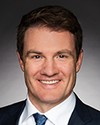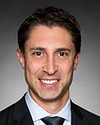Thank you, Mr. Chair.
Thank you to the witness for being back at our committee.
In your last testimony to us, you claimed there were no contaminants found in the waterways. In fact, we even talked about that today in the previous discussions.
Given this statement, how do you explain that, prior to your testimony, Imperial staff told ACFN inspectors that dissolved iron was found in waterbody 3? Then, on April 3, 2023, a test showed F2 hydrocarbons and napthenic acids in waterbody 3. On March 10, 2023, ECCC said the waterway had become “deleterious, or harmful, to fish”.
We are also seeing a high incidence of bile cancer. Chief Adam's father-in-law passed away. Seventeen other people have passed away because of bile cancer. The normal incidence is one in 100,000, so it's a rare cancer affecting them. You mentioned that Health Canada is looking at it.
All this information was available prior to our last meeting. Why were we not made aware of it, given the opportunity you had to speak about that—and today, in fact?





